Last Updated on January 6, 2021 by Dr Sharon Baisil MD
Eating Indian foods as a person with diabetes can be challenging. But it is always better and even helpful to know what kinds of food you must avoid maintaining healthy blood sugar levels.
Here are 15 Indian foods that diabetics should avoid completely:
1. Samosa
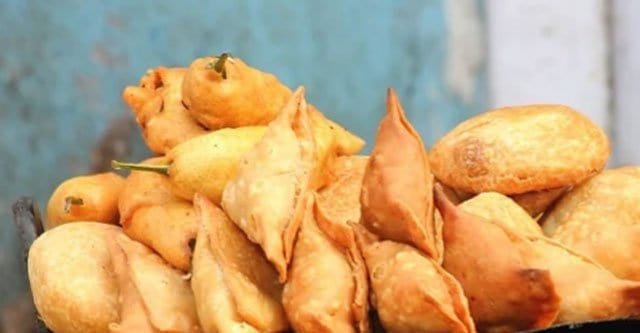
The samosa may be the most common Indian snack and the face of Indian street food items. These are among the most craved snacks for us all.
However, savored this popular Indian snack item may be; it has its list of downsides.
First of all, samosas are deep-fried, which adds the oil content making it bad for the body’s sugar and cholesterol levels.
It is also made out of maida, refined flour, which is higher in GI and carbs than whole-grain flours.
The filling of the samosa is made from potatoes, which is another starch-rich, high carbohydrate-containing vegetable.
All in all, the samosa is very high in calories and contains high carbs responsible for harming your blood glucose.
Try to avoid this fried snack to keep your diabetic health under check.
2. Ghee
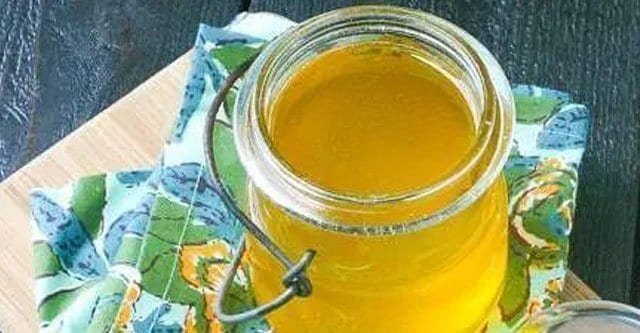
Ghee, or clarified butter, is another prevalent fat source used in Indian dishes to enhance the taste and heaviness.
It adds a distinct taste and scent to the food, making it more royal and delicious.
Ghee is a source of increasing the oil content in food. It can contribute to weight gain and digestive issues.
Ghee is even more concentrated in fat as compared to butter.
Ghee is said to add bad cholesterol to the body, which can be dangerous. This oxidized cholesterol is claimed to increase the risks of heart-related diseases.
Ones looking for a healthier solution can either reduce their daily ghee intake to around one or a maximum of two tablespoons per day, lessen more of it eventually, and only induce it in cooking once in a while.
3. Sabudana
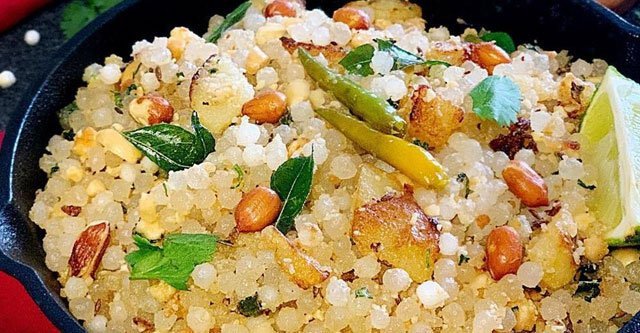
Sabudana is a very common snacking item and is included in many recipes to make light and fasting-effective snacks and meals.
Sabudana, although it is a good source of fiber that can benefit diabetic, but has high carbohydrates, so its intake for diabetic patients must be in limited quantities.
It is derived from the starchy tapioca tuber.
Sabudana has a higher Glycemic Index as well as high calories.
Sabudana is high in calories and is said to provide an instant increase of energy in the body, and hence, it is consumed during fasting periods. But the same rapid encouragement of energy results in spiking blood sugar levels.
Thus, the intake of Sabudana must be done carefully and moderately for one following a diabetic diet.
4. White Rice
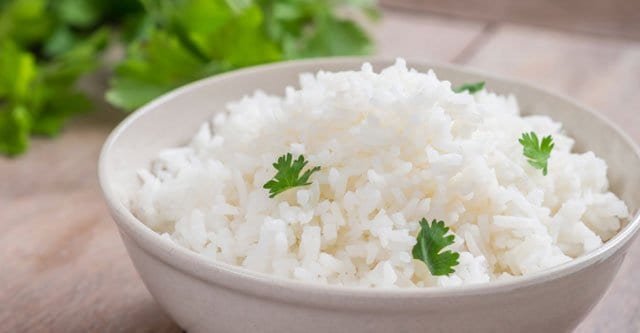
Rice forms a basic staple item in the Indian diet. White rice is often consumed in all meals of the day. India includes rice as one of the essential grains used as food.
Rice is high in the following contents – starch, sugar, carbohydrate, and calories.
The glycemic index of rice is also high, making it unsuitable for being consumed regularly.
Completely avoiding rice, although it does not seem like a very viable option for Indians.
It is rather better to include it less frequently and avoid intake of it in large portions.
Make sure you do not include rice thrice in a day in your meals as a diabetic patient.
Instead, reduce your quantity of rice intake to half of what it was, and add more protein and vegetables to balance it according to your diabetic needs.
5. Starchy vegetables – potatoes, sweet potatoes, yam, beets, etc.

Potatoes, sweet potatoes, yams, beetroots, etc., are tuberous veggies high in starch.
These vegetables are common ingredients in the Indian kitchen.
These tubers are a good source of fiber, but they also contain high amounts of starch, carbohydrates, and sugars.
Too much intake of these veggies can cause potential rises and risks in your blood sugar levels.
Frying these veggies in oils can add calories and make them slightly more dangerous for a healthy diabetic diet.
These vegetables have a medium to high range of Glycemic index. Their consumption can, therefore, have specific rising effects on one’s blood sugar levels.
Controlling the Portion-size is crucial for these starch-filled vegetables, as they have specific benefits.
Try to stay away from fried varieties of these veggies.
6. Idli
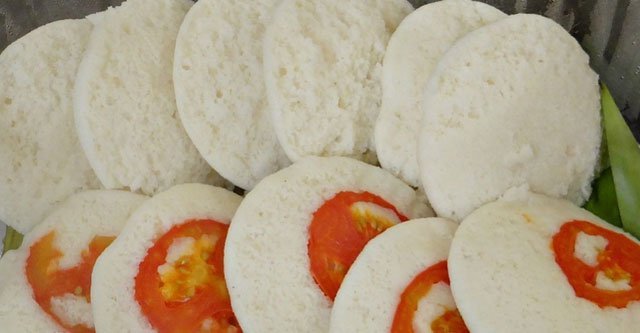
Idlis are a popular south Indian dish, and it is famous all over the country.
They can be included in various parts of a meal, breakfast, lunch, snacks, or dinner.
Idli is prepared using rice. The fermentation of rice paste forms the batter for this standard and popular south Indian snack item.
Rice is high in starch, carbs, as well as calories.
These ingredients together make this food item a not-so-recommended one for people who have diabetes.
Intake of Idlis, more than a specific amount, can lead to surges in the levels of blood sugar.
A reasonable idea to keep a check on your diabetic diet is to reduce the consumption of carbohydrates.
It is better to let go of carbohydrates from every meal of the day. These can be filled with other nutrients that do not hurt one’s blood sugar levels.
7. Fruit Juices
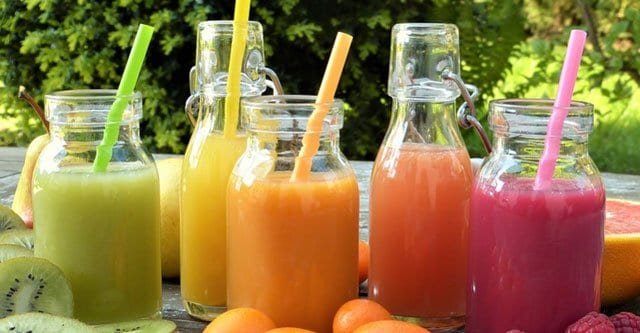
Being a diabetic patient, there are certain fruits that one can eat and some to avoid.
Fruits are naturally sweet and thus are best taken in reduced quantities or restrictively.
But what is more harmful is making juices of fruits instead of eating it the way it is.
Fruit juices have high amounts of sugar in them. They can cause an immediate and adverse rise in the blood sugar levels of the body.
A person with diabetes must avoid the consumption of these juices.
The tetra-packed juices, fruit juice boxes, canned drinks, etc., are very high in sweeteners and added preservatives and other elements after processing, making them dangerous for consumption diabetics.
It is rather advised and even healthier to eat the fruit, instead of its juice.
Make sure you completely avoid store-bought and packaged fruit juices.
8. Sugar

Sugar is the most direct source of carbohydrates.
Indian food, be it sweet, salty, or savory, sugar seems to make its way into all kinds of Indian dishes.
Sugar is not only inadvisable for diabetics, but it is also considered as a culprit for making an overall lifestyle unhealthy.
White Sugar is full of empty calories and adds carbohydrates, which results in the higher release of glucose into the bloodstream, causing unusually high levels of blood sugar that can be very dangerous.
On top of that, sugar has ZERO nutritional value and only increases the amount of fat that already exists in the body, which results in weight gain.
High amounts must reduce the intake of sugar to maintain a healthy lifestyle and avoid chronic health conditions like – diabetes, cholesterol, cancer, obesity, etc.
There are many alternative sugar products specially made for diabetic patients to incorporate sweetness without harming their blood glucose levels.
9. Parathas and Naans
A fundamental yet delicacy item for the North Indian cuisine is the Paratha.
Naans are yet another bread item made from refined flour – Maids, and thus, can be high in carbohydrates.
Naans and Parathas are prepared using oily mediums that add to their taste, but at the same time, deplete their nutritious value.
Their effects on a diabetic’s blood sugar levels can be very rapid and harmful.
You can opt for healthier versions of Parathas that include whole grains, which have a less adverse effect on the body’s sugar level and provide fiber.
There are many online recipes available for making a diabetic-friendly and tasty Paratha at home.
10. Dosa

Like the Idli, Dosa is also a very popular South Indian dish that is pretty commonly enjoyed throughout the Indian subcontinent.
Rice is the main ingredient used in the batter to make Dosa.
As we know, rice is a very high source of calories, carbs, and starch. Thus, the Dosa, which is made using this base element, can increase the body’s blood sugar levels.
Consuming extra carbohydrates as part of your meals can hamper your diabetic diet. The Dosa has similar effects that heighten the blood sugars.
Limiting the intake of these items is the way to bring along good changes to suit your diet as per your diabetic health.
Try to keep a regular check and limit your carb intake.
11. Sooji

Sooji, also known as semolina, is an Indian kitchen basic used to prepare dishes of various kinds.
It is even recommended as one of the healthy foods in general, but it is questionable to consider this as part of the diet plan for a diabetic diet.
Semolina has a GI of 66, and its GL is 14.7. That means – it falls under a medium range.
It is an item to be avoided if you are sensitive to gluten.
Sooji can be prepared efficiently not to harm the blood sugars of a diabetic patient.
Adding veggies to this while making upma from Sooji can be a healthy way to incorporate good nutrients and make it healthier.
But it is best to have it in restricted and moderate quantities to prevent any casualties.
12. Deep-fried snacks / Namkeens
Indian sweet shops, homes, and kitchens usually have a good supply of Namkeens, salty, and savory snacks.
These are usually prepared to satisfy our carbohydrate cravings, and in the same way, it can affect the blood sugar levels due to their high calorie and carb contents.
Anything deep-fried must be avoided by diabetics, as they have harmful effects on digestion and sugars.
Moreover, maida is a common ingredient used to make Namkeens, which adds to its carb value.
Overall, the packaged Namkeens even have processed preservatives and additives, which should be avoided for a healthy diet.
High-fat Indian sweets
Be it the ever-famous jalebi, peda, barfi, or any other Indian sweets, the sugar levels in these sugary delicacies are the most harmful to one’s sugar levels.
If you have a sweet tooth, it is crucial to restrict your Indian Mithai cravings. The smallest portions of these can have a rapid negative impact.
The number of carbs, calories, sugar, bad cholesterol, etc. they contain, can be a reason for your mismanaged diabetic levels.
Sweets are a strict no for Diabetics.
14. Tikkis
Tikkis of various kinds are among everyday mouth-watering Indian snack items. Unfortunately, they have high amounts of oil, carbs, and fats, which contribute to increases in sugar levels that can harm a diabetic patient’s health.
They are made out of ingredients, which, when combined, give rise to high carb amounts.
Moreover, the deep-frying makes an addition to the already unacceptable list of flaws.
There are many other ingredients that one can use to make diabetic-safe Tikkis from vegetables like bottle gourd, cabbage, bitter gourd, etc.
15. Honey and Jaggery
Just like sugar, the intake of other Indian sweeteners like Jaggery and Honey must also be reduced. They also have similar effects on diabetic patients.
Although considered a better option over white sugar, these can still have high impacts on one’s blood sugar levels.
Although more natural and less processed, these products are capable of causing risks in diabetes.
Honey and Jaggery often have the same adverse effect on insulin and blood sugar compared to white sugar.
Minimizing the sweet intake is the best way to combat spikes in sugar levels.
References
- https://pubmed.ncbi.nlm.nih.gov/26177573/
- https://pubmed.ncbi.nlm.nih.gov/27395419/
- https://pubmed.ncbi.nlm.nih.gov/30431586/
- https://pubmed.ncbi.nlm.nih.gov/29522789/
- https://pubmed.ncbi.nlm.nih.gov/30098129/
- https://pubmed.ncbi.nlm.nih.gov/29269890/
- https://pubmed.ncbi.nlm.nih.gov/22411372/
- https://pubmed.ncbi.nlm.nih.gov/32142510/
- https://pubmed.ncbi.nlm.nih.gov/29178536/
- https://pubmed.ncbi.nlm.nih.gov/15106237/
- https://pubmed.ncbi.nlm.nih.gov/26413954/
- https://pubmed.ncbi.nlm.nih.gov/32041141/









